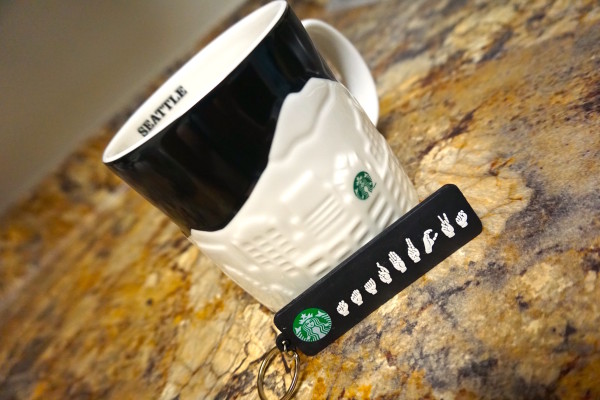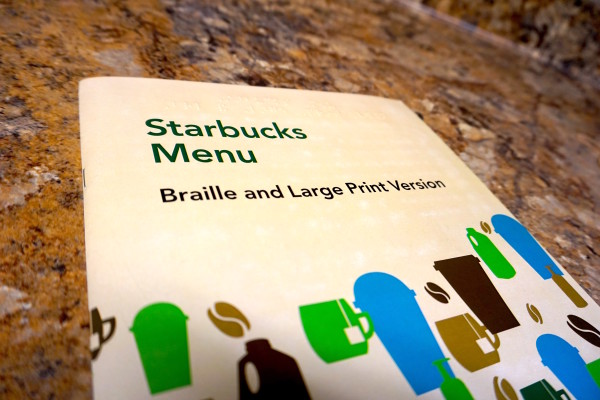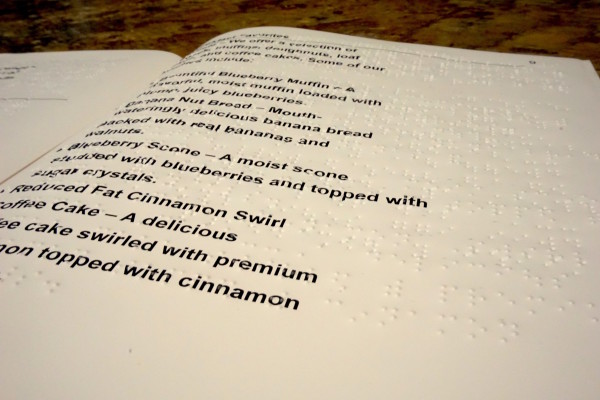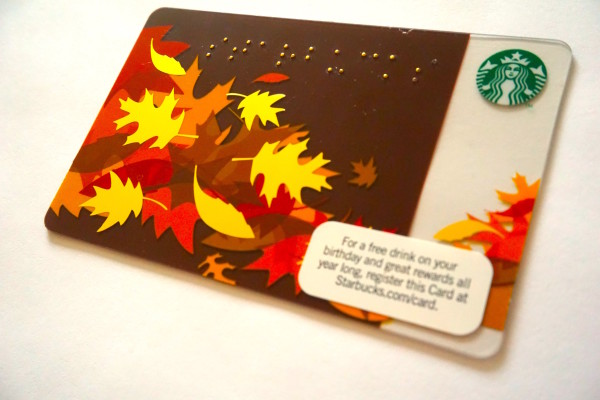This article is also available in: 日本語
*** Part 1 is here ***

After the Access Alliance meeting at Starbucks Headquarters, I had an opportunity to talk with Ms. Marthalee Galeota who is a manager, Equal Opportunity Initiatives and is also a nationally certified American Sign Language interpreter.
Marthalee went to an elementary school that included many children with disabilities.
One of Marthalee’s best friends had a sister with Down Syndrome.
To Marthalee, people with disabilities were always part of her daily life.
However, when Marthalee grew older, she found out how people with disabilities were treated unfairly and how they are isolated from the society.
After she graduated with her Master’s degree in counseling, she started working with people with various disabilities, including developmental disabilities, vision loss, autism, physical disabilities.
One of her specialties is working with Deaf-Blind people using tactile sign language.
At Starbucks, Marthalee is like a professional “bridge.”
She serves as an internal consultant sharing her subject matter expertise on new and existing initiatives.
If any departments have any questions about hiring people with disabilities, arranging accommodation, making accessible training programs, she provides the resources and shares the possibilities to open doors for people with disabilities.
Marthalee not only dedicates her efforts for employees with disabilities, but also for Starbucks customers with disabilities by improving customer service and accessibilities at store.
For example, Braille and Large Print Menus and Picture Menus are available at all Starbucks stores in the U.S.



She also created a training module on “Creating a Deaf Friendly Environment.
She herself is a certified sign language interpreter and manages the interpreter services department for Starbucks.
When Deaf employees need an interpreter, they make their request online. Interpreters are provided at the Starbucks Support Center, the stores and roasting plants.
Starbucks has one centralized budget to pay for reasonable disability accommodations which makes for an efficient system.

Marthalee said,
In the US, 1 of 5 people have disabilities.
We want to create a welcoming environment that is inclusive of people with disabilities.
It’s not about “them” and “us” – it’s about “all of us.”
People with disabilities bring ingenuity, creativity and innovation.
We have employees with various disabilities working at Starbucks – Deaf, legally blind, Tourette’s Syndrome, developmental disability, autism.
Recently, one of their employees with autism, Sam, known as the “dancing barista,” was featured on the Ellen Show.
Ellen Meets the Dancing Starbucks Barista
Increased accessibility is beneficial to everybody, not only people with disabilities – whether it’s a curb cut, a power door, or captioning – it helps everyone.
Designing with accessibility creates a workplace and stores where both employees and customers can feel truly welcomed.
That effort eventually leads more people to join there as employees or customers.
This is a brilliant cycle to make everyone happy in the long run.
Many companies focus on outcomes for the next year, 5 years, 10 years. But if they want to continue their business in the next generation, they would be wise to invest on accessible environments.
The benefit to the company will be realized through the brand reputation and the loyalty of customers and employees.
Starbucks has proven that.
To be continued.

Marthalee is a true ambassador of disability inclusion. It is a privilege to work and learn from her. I’m so glad the two of you were able to connect. Thanks for sharing, Mizuki!
Hi, Jessica! Yes, I was so lucky to meet and talk with her in person. I want to work like her in the future, a bridge between people with and without disabilities:) I’ms glad that a lot of people love these Starbucks reports and share with others!
Many companies focus on outcomes for the next year, 5 years, and 10 years. But if they want to continue their business in the next generation, they would be wise to invest on accessible environments. The benefit to the company will be realized through the brand reputation and the loyalty of customers and employees.